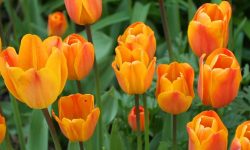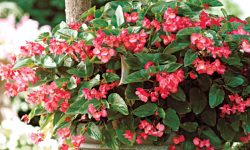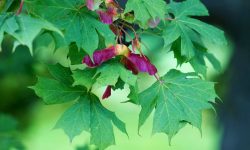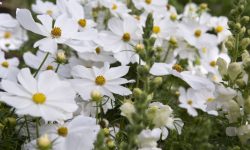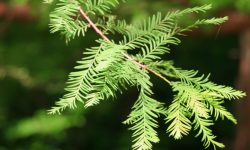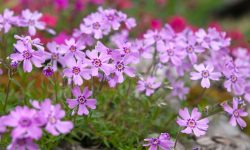The Hawaiian archipelago, comprising 8 main islands and 124 islets, stands as a volcanic marvel in the heart of the Pacific Ocean. Subject to the Northeast Tradewinds, the islands boast diverse weather patterns, from lush rainforests on windward slopes to arid landscapes on leeward slopes. This varied climate nurtures a rich array of trees, defining Hawaii’s unique botanical landscape.
Let’s explore 35 common tree species grown in Hawaii State, as well as discover their characteristics and how to identify them.
Different Hawaii State Tree Species
Hawaiian Treefern (Cibotium chamissoi)
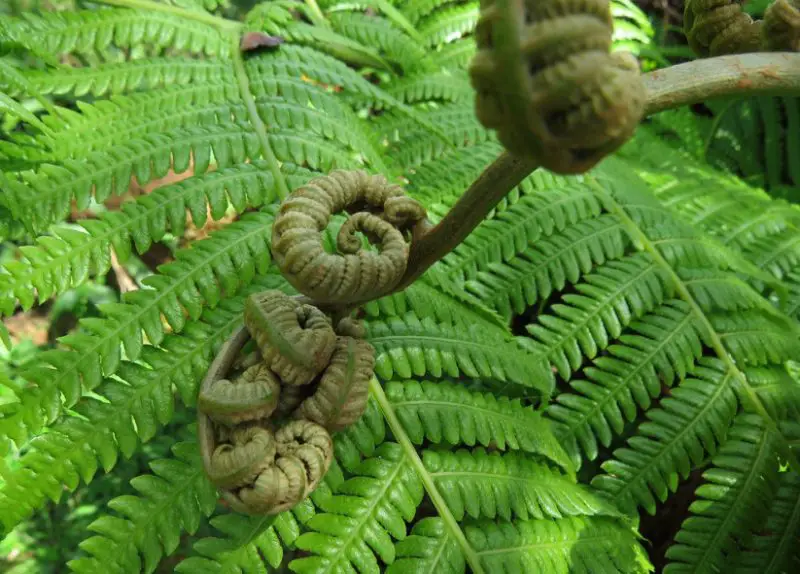
The evergreen fronds of the Hawaiian Treefern (Cibotium chamissoi), which can reach a height of 6 ½ feet, exude tropical lushness. It is native to Hawaii and grows best in forests that are semi-wet to wet, especially on windward island sides. It is captivating and grows slowly, giving scenes an instant sense of opulence. This precious species, also called Häpu’u or Chamisso’s Manfern, is in risk of extinction in its native environment.
Coast Sandalwood (Santalum ellipticum)
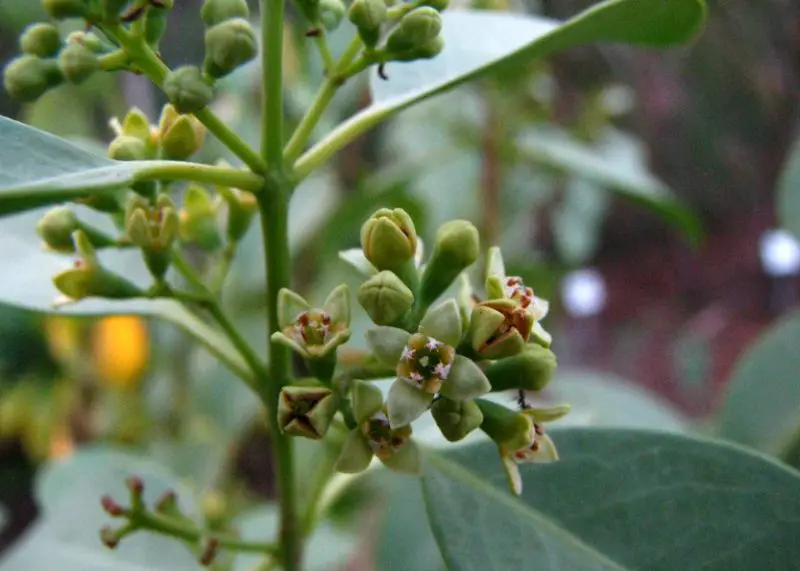
Native to Hawaii, coast sandalwood (Santalum ellipticum) grows well next to shorelines or in dry shrublands among non-native plants. This adaptable plant is adorned with fragrant, year-round blooms and grayish-green leaves. It is valued for the essential oil found in heartwood, which is used in aromatherapy, cosmetics, and perfumes. It thrives in zones 9–12 and is drought- and poor-tolerant, providing both aesthetic appeal and practicality. It gives landscapes a hint of maritime charm and is also known as Iliahialoʻe.
Cannonball Tree (Couroupita guianensis)
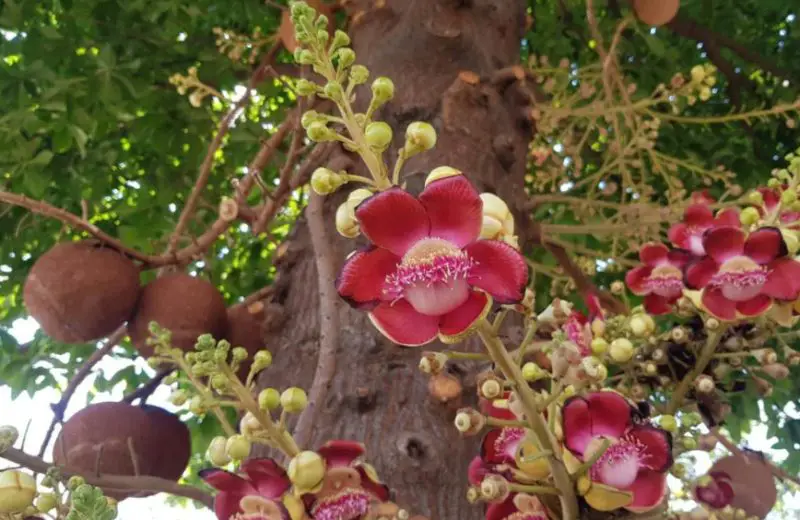
The fascinating deciduous plant that is native to tropical places is called the Cannonball Tree, or scientifically, Couroupita guianensis. One of its special qualities is that it grows fruit and blossoms right from the trunk, giving off a strong scent, especially in the morning. Large salmon pink blossoms and unusual spherical fruits that resemble cannonballs are two characteristics of this tree that lend an exotic beauty to any landscape.
Golden Shower Tree (Cassia fistula)
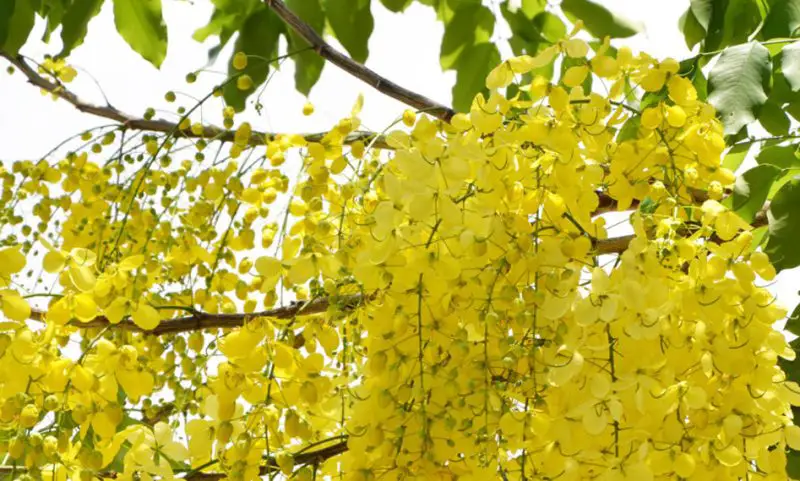
Cassia fistula, commonly known as the Golden Shower Tree, is a highly prized semi-deciduous tree that adorns tropical and subtropical environments. Its distinctive characteristic is the summertime shower of golden or yellow blooms that gracefully hang from long racemes. The tree is quite the sight in bloom, its limbs heavy with flowers against a background of sparse foliage. Its bark changes with age from a smooth grey to a black and rough texture. This tree is a hardy beauty that thrives in well-drained soil and shows drought tolerance once established.
ʻōhiʻa lehua (Metrosideros polymorpha)
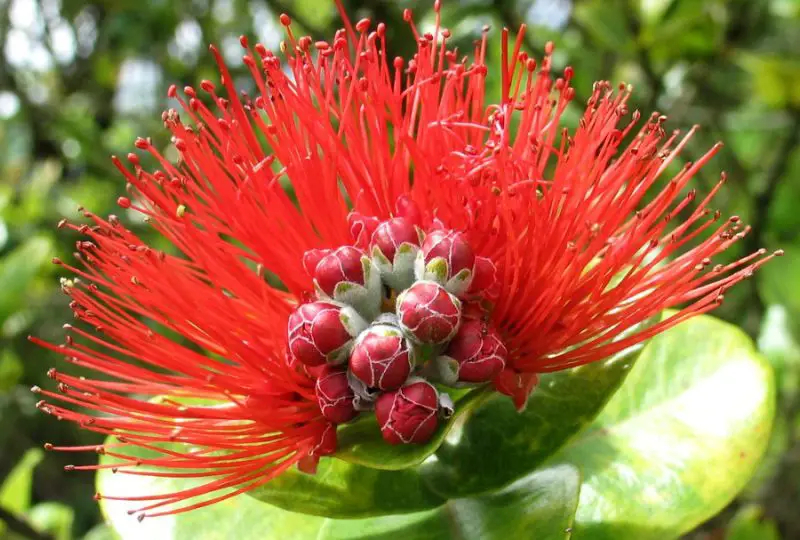
The ʻōhiŻa lehua, or Metrosideros polymorpha as it is scientifically called, is a well-known native Hawaiian flora that ranges in size from modest shrubs to towering trees. Its vivid flowers, which are usually red but can sometimes be yellow or orange, enthrall onlookers. Growing in volcanic soil, it initiates lava flows and demonstrates tenacity by means of aerial roots that look for moisture. Honored in Hawaiian culture, it represents the volcanic goddess Pele and provides nectar-rich blossoms for native birds.
Rose Apple (Syzygium malaccense)
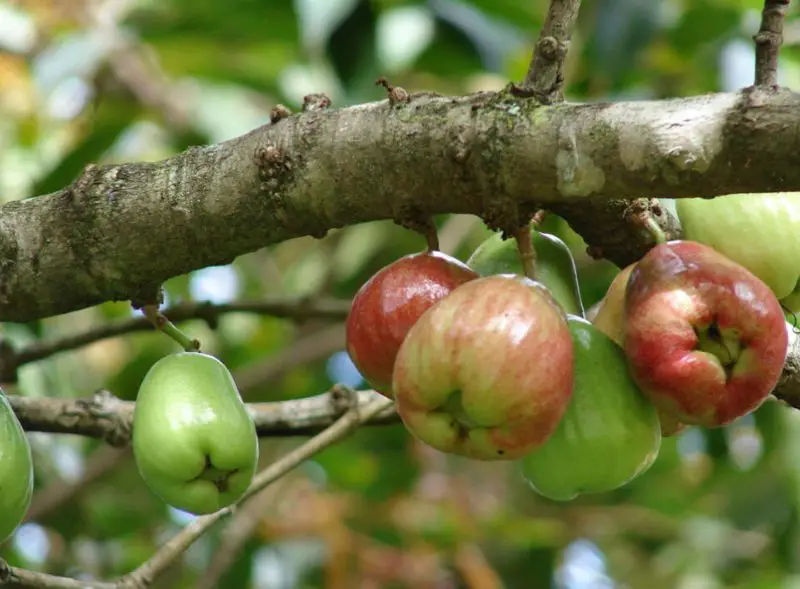
Syzygium malaccense, the scientific name for the rose apple, is a fruit tree with a wide range of uses that can be found in tropical lowlands and as high as 4000 feet. It has dark red fruits with pink or white stripes and is distinguished by its large crown and reddish-pink pom-pom-like blossoms. Its decorative value is valued in addition to its culinary applications, especially in mid-elevation rainforests where it thrives as an understory tree.
Tamarind (Tamarindus indica)
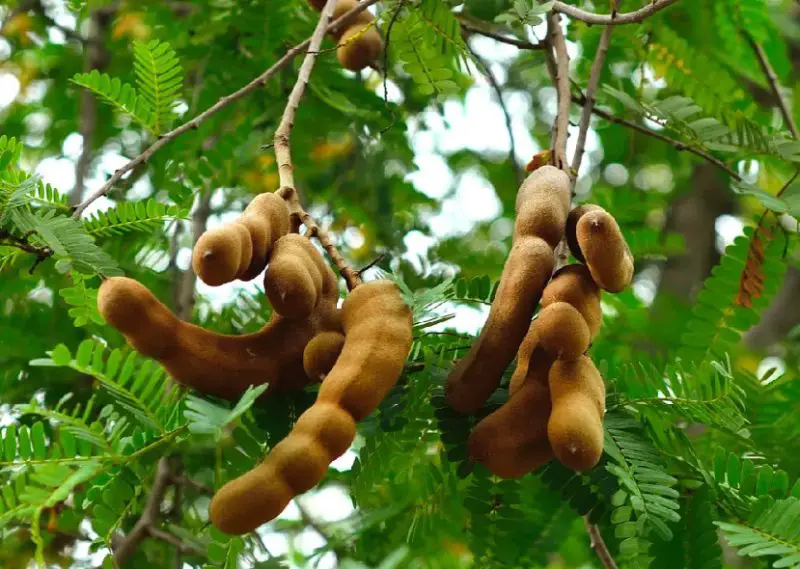
The scientific name for the tamarind tree is Tamarindus indica, and it is a hardy, long-lived tree with a broad, dense crown. Its cinnamon-brown seedpods, which are extensively utilized in tropical cuisines, follow its fragrant blossoms. With its fluffy evergreen foliage and 6″ long leaves made up of 10–18 pairs of oval–elliptic leaflets, it creates a dappled shadow. It thrives in arid tropical settings with a distinct dry season and, once established, shows drought tolerance.
Hawaiian Sandalwood (Santalum paniculatum)
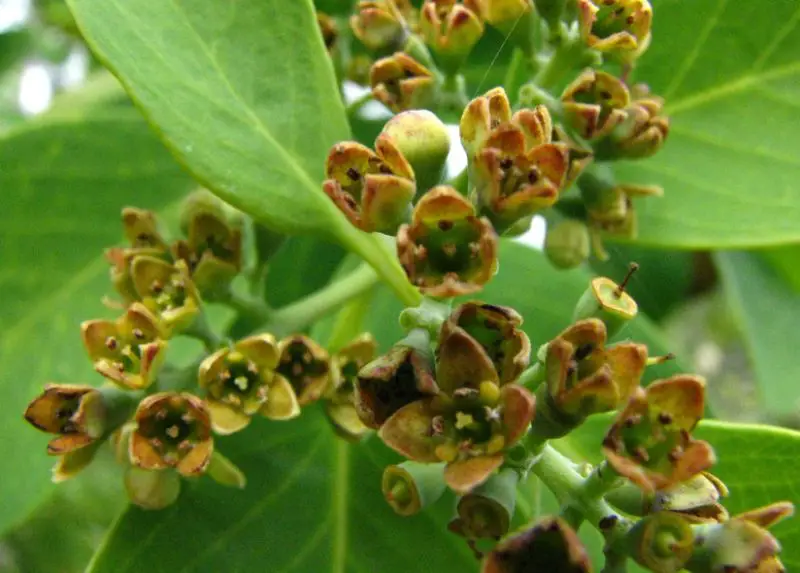
Scientifically known as Santalum paniculatum, Hawaiian Sandalwood grows best in dry forests with lava substrates or in moist environments. It’s an evergreen that grows slowly, with tiny flowers at the tips of its branches and oval, greenish-blue leaves. It was endangered because of its prized heartwood, which was historically used to make oils and wood products. It is prized for its pleasant wood and prefers well-drained soils, but it can withstand a variety of circumstances, including exposure to the sea.
Paraná Pine (Araucaria angustifolia)
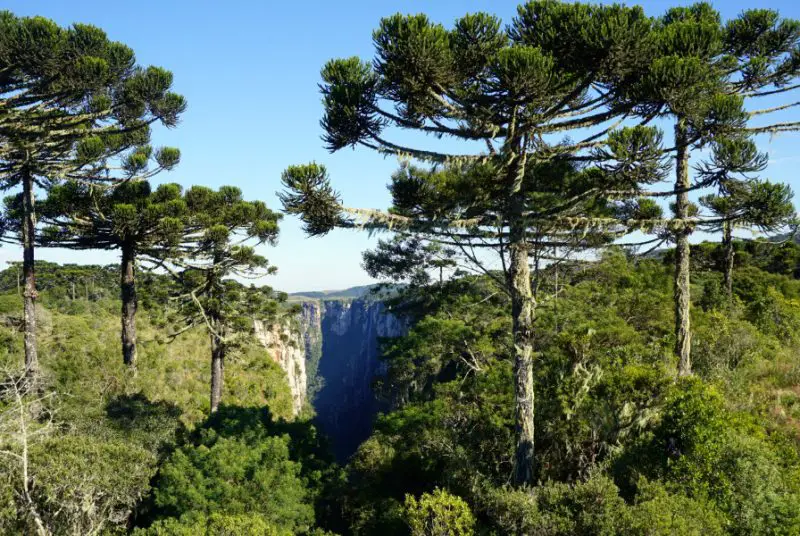
The Paraná Pine, or Araucaria angustifolia, has a flat crown and a straight trunk with horizontal branches. It has unique horizontal stripes on its resinous, scaly bark. Leaves: Sharp, dark green or glaucous, arranged in whorls, that cover the tree except for the trunk, can last up to 15 years. Both humans and wildlife like its huge, pine-nut-like seed cones and oblong pollen cones, which are produced by this dioecious plant. It grows well in well-draining soil and likes conditions that are somewhat acidic.
Banyan Tree (Ficus benghalensis)
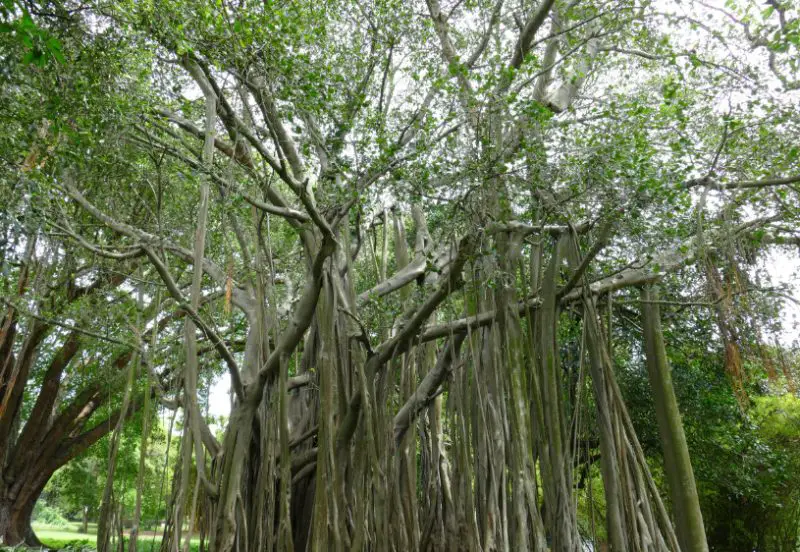
Scientifically known as Ficus benghalensis, the banyan tree has a broad crown and recognizable aerial roots that eventually develop into wooden trunks when they reach the ground. Its branches are covered in ovate to elliptical leaves, and because it is monoecious, it bears both male and female flowers on the same tree. Rich in bird food, its red or orange fruits grow up to 4000 feet in height in tropical lowlands. Being the national tree of India, it can reach amazing heights and has the greatest canopy in the world.
Jacaranda (Jacaranda mimosifolia)

Jacaranda trees, or Jacaranda mimosifolia in scientific terms, are widely found across tropical and subtropical regions of the world, including Hawaii. They are prized for their eye-catching clusters of violet-blue trumpet-shaped blooms. Their rapid growth makes them invasive in some places, where they thrive in riparian and dry-mesic settings. Their oval-crowned, usually single-trunked leaves add to their attractiveness. Jacarandas favor slightly acidic soils that drain easily over alkaline ones.
Trumpet Tree (Cecropia obtusifolia)
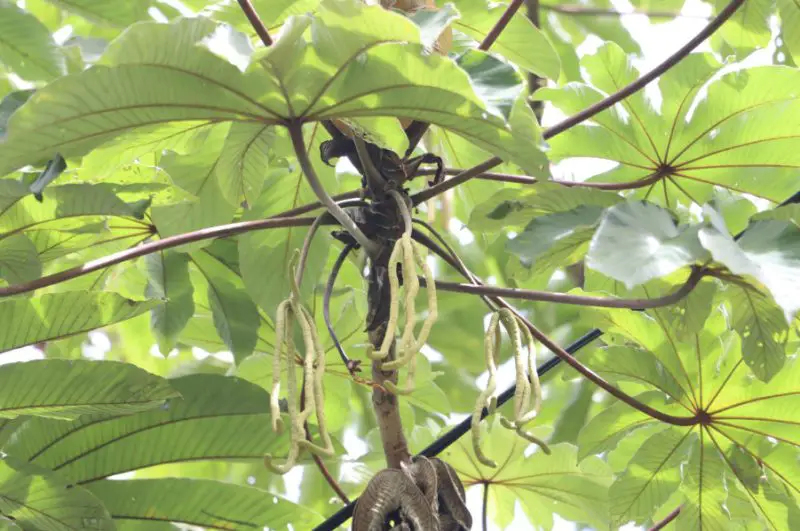
Cecropia obtusifolia, the scientific name for the Trumpet Tree, is a quickly spreading tree that has invasive qualities in Hawaii. It is native to low-lying tropical regions of the Americas, where it grows in fields that have been abandoned and by roadsides. Its inflorescence holds densely packed fruit, and its distinctively lobed leaves resemble a hand with delicate fingers. With seeds scattered by birds and a hollow trunk, it creates a striking silhouette against the sky.
Cook Pine (Araucaria columnaris)
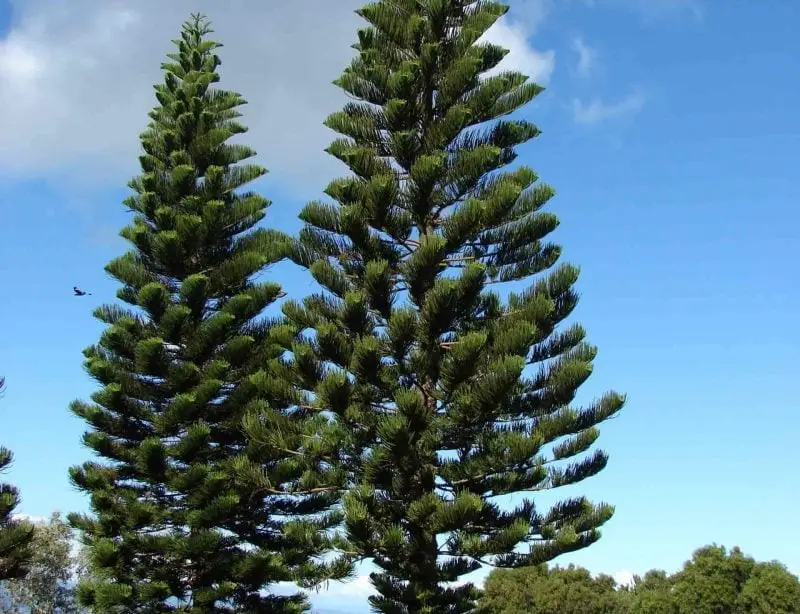
Araucaria columnaris, often known as the Cook Pine, is a tall tree with a thin conical shape and horizontal branches arranged in whorls along its slightly slanted trunk. It has a distinctive look due to its spirally arranged leaves, which are triangular in adults and needle-like in youngsters. Dioecious, its distinctive charm is enhanced by its upright, scaly female cones and dangling male cones.
Candlenut Tree (Aleurites moluccanus)
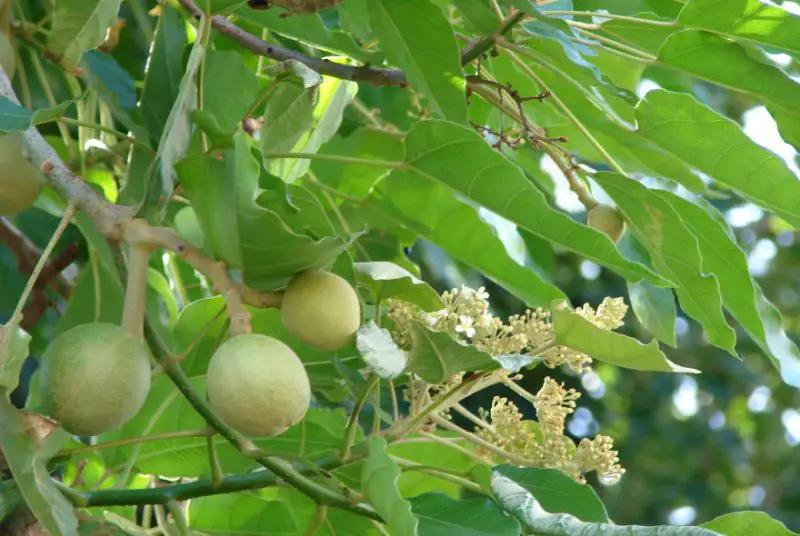
The Candlenut Tree, Aleurites moluccanus, thrives in moist to wet mesic areas of Hawaii’s lower to middle elevations. Its spreading canopy bears silvery-green leaves with 3, 5, or 7 pointed tips, appearing hairy and variable in shape. Monoecious, it showcases hairy flowers on terminal clusters. Renowned for its indigenous uses, it’s honored as Hawaii’s state tree.
Jackfruit Tree (Artocarpus heterophyllus)
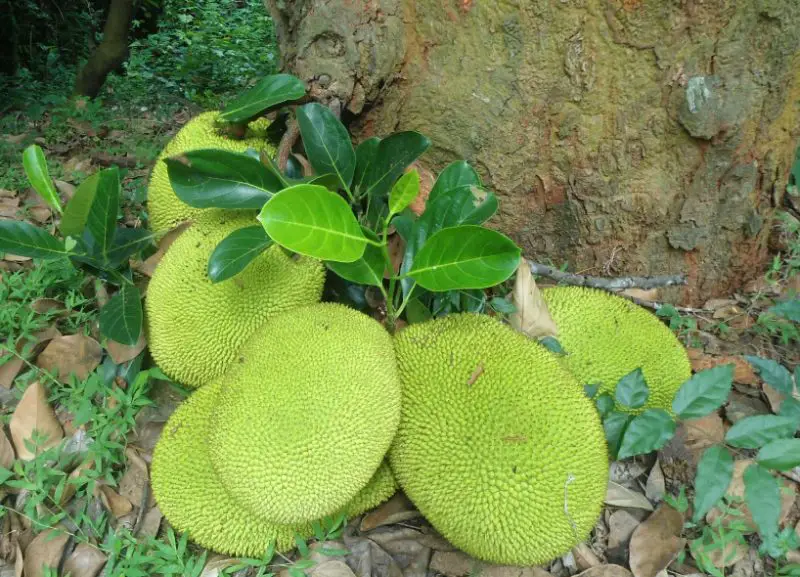
Scientifically known as Artocarpus heterophyllus, jackfruit trees have evergreen canopies and produce the largest fruit in the world—some weighing over 100 pounds. They have straight stems and thick, glossy leaves. They can yield up to 200 fruits a year. After 150–180 days, aged trunks and branches give way to blooms. Because of their deep taproots, they are unable to withstand drought or waterlogging and instead require rich, well-drained soil and continuous rainfall.
Silk Oak (Grevillea robusta)
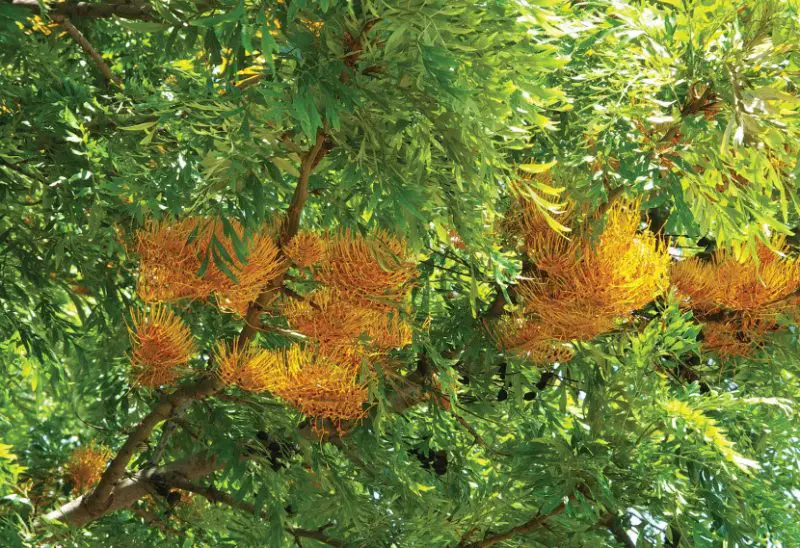
Grevillea robusta, also known as the Silk Oak, is an exquisite blooming tree native to Australia. It begins life as a pyramid and grows into a broad canopy with spikes holding big orange-gold flowers. Its pale underbelly and olive green, fern-like leaf add to its attractiveness. It is an amazing addition to tropical and subtropical gardens, flourishing in well-drained acidic soils.
Be Still Tree (Thevetia peruviana)
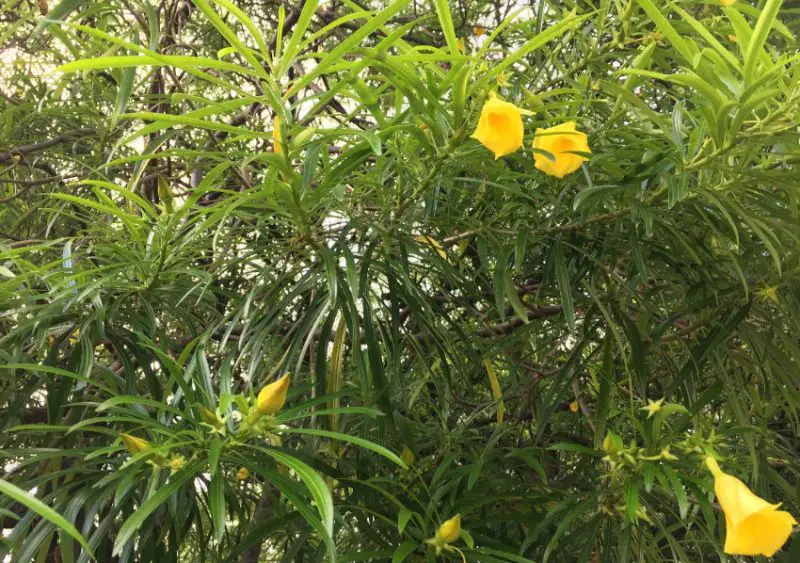
Thevetia peruviana, commonly known as the Be Still Tree, is distinguished by its glossy lanceolate leaves and eye-catching yellow funnel-shaped blooms. Frequently observed in Hawaiian environments, it has established itself in semi-arid mesic zones. All components, particularly the seeds, are extremely dangerous and can result in fatality or severe disease if consumed; hence, caution is advised.
Scrambled Egg Tree (Cassia surattensis)
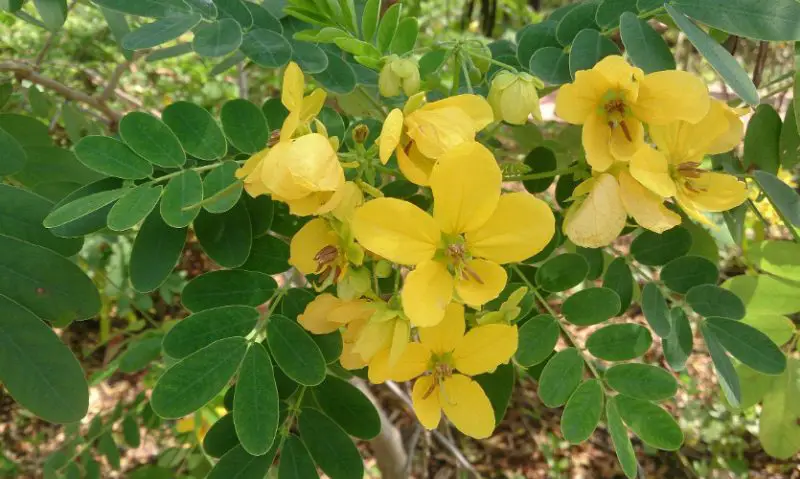
Cassia surattensis, often known as the scrambled egg tree, has round-tipped leaves, yellow blooms in upright clusters, and long seed pods afterward. Its profuse blossoming may cause the leaves to droop. Although it grows more like a shrub, it can be landscaped to resemble a tree. Now established in Hawaii, it thrives in sandy soil and light shade, and is valued for its continuous flowering season.
Bangkok Teak (Tectona grandis)
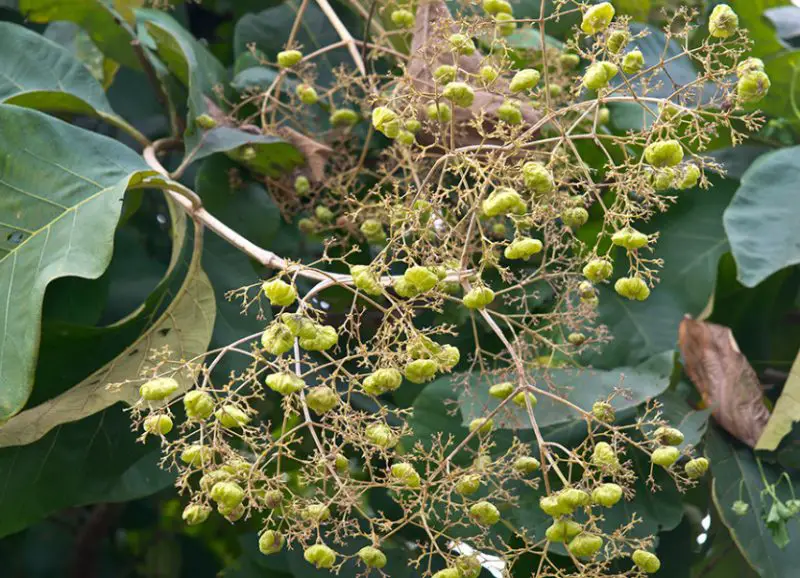
Tectona grandis, also known as Bangkok Teak, is a large, South East Asian native tree with a broad crown and slender branches. Prized worldwide for its lumber, it is widely grown in tropical climates. It is a popular choice for parks because of its big leaves and widely dispersing flower clusters. Growing best in seasons with distinct wet and dry spells, it needs lots of rainfall and rich, deep soil. It endures and regenerates as a pioneer species in agroforestry, reaching peak stages.
Milo (Thespesia populnea)
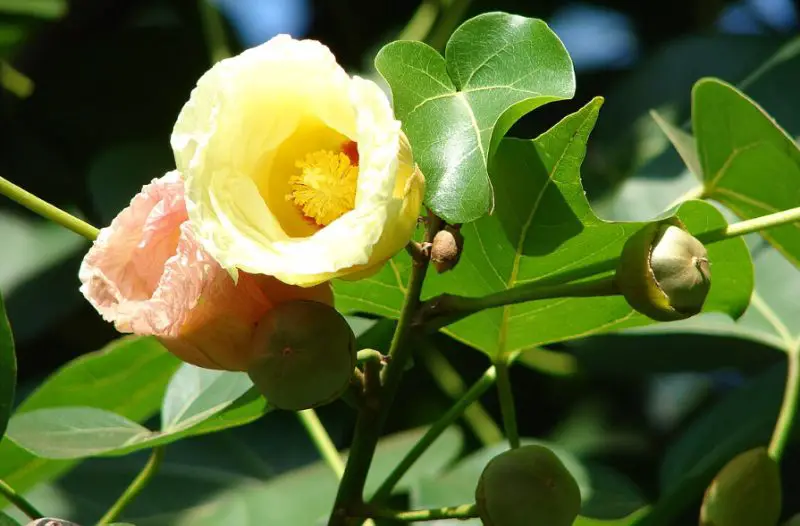
Milo, or Thespesia populnea, is a tropical coastal plant that grows well next to mangroves and spreads swiftly by dispersing its seeds into the ocean. This quickly spreading tree or shrub is valued for its excellent heartwood and beautiful, broad crown. It avoids shade but can withstand light cold and heavy soils. It can withstand sandy soils and salt spray. Regarded as sacred in the Pacific, it is an essential source of food, medicine, and cultural rituals.
Jhalna (Terminalia myriocarpa)
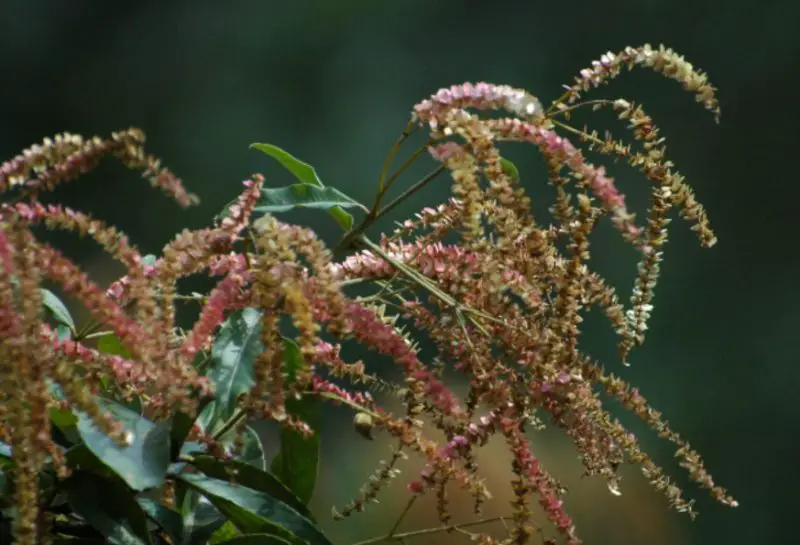
Terminalia myriocarpa, often known as Jhalna, is an important, huge evergreen wood tree with spreading branches and a tiered structure. Simple elliptical leaves accentuate a straight trunk, and older species frequently have buttresses. Small yellow blooms and pink-winged seed pods adorn its branches, which give parks a delicate charm and cardamom crops some shade. It thrives in humid subtropical to tropical areas with a short dry season and is valued for its ability to produce charcoal and furniture.
Hawaiian False Mulberry (Streblus pendulinus)
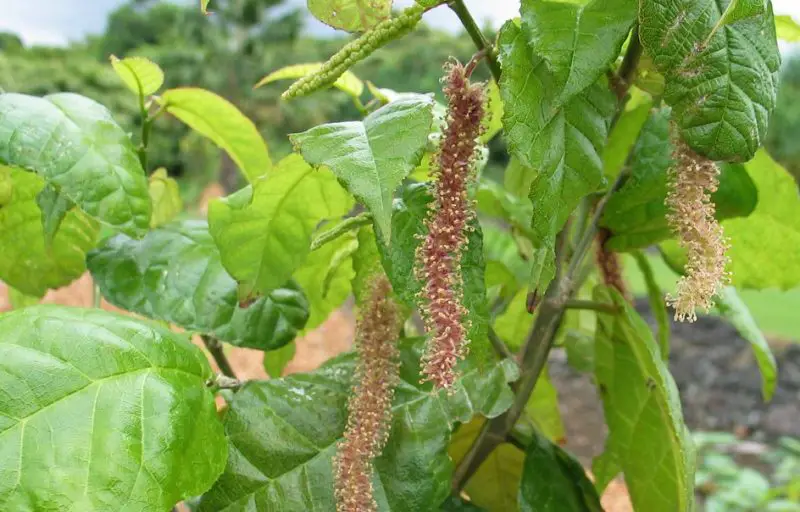
Native to Hawaii’s dry and wet woods, Streblus pendulinus, is a thin tree or shrub known as the Hawaiian False Mulberry. Its two rows of sharply serrated leaves have light green undersides with elevated yellow veins and dark green tops. It produces lustrous, sweet-flavored, black-purple fruit and is mostly dioecious. It is distributed throughout the Hawaiian Islands and gives the scenery a distinct beauty.
Koa (Acacia koa)
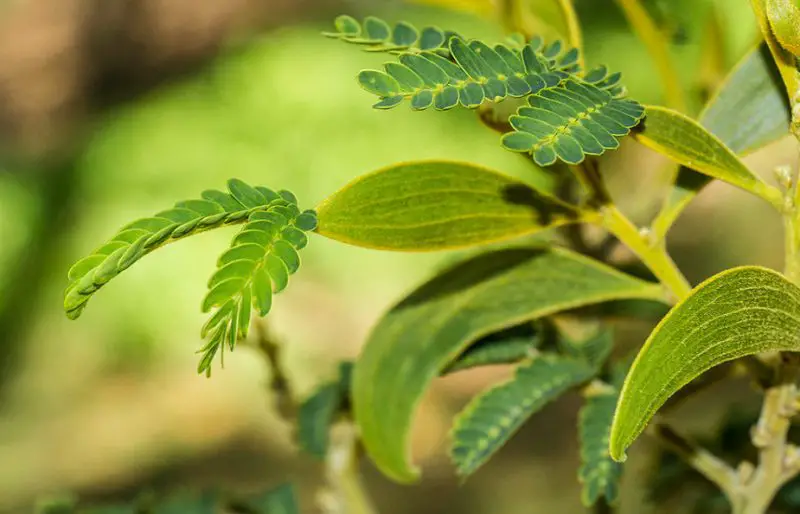
With its wide canopy, the stately native of Hawaii, koa (Acacia koa), thrives in upland forests. It grows best above 2000 feet but can tolerate lower elevations and is frequently found providing temporary shade in residential areas. Koa trees, which may grow up to 100 feet in the wild, produce valuable wood for instruments and furniture. It is also called Koaiʻa or Koaiʁe, and it blooms periodically, adding beauty all year long.
Coconut Palm (Cocos nucifera)
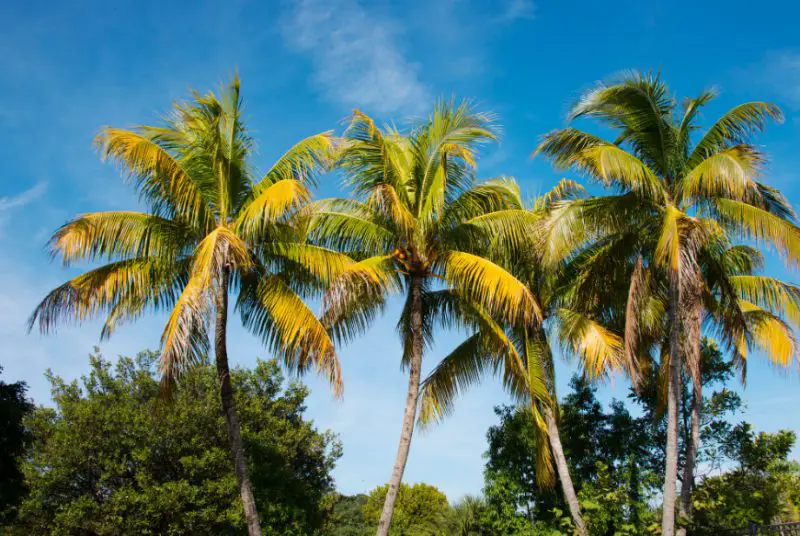
Hawaii’s shores are typified by the renowned Coconut Palm (Cocos nucifera), which embodies a tropical atmosphere. It is valued for its adaptability; every portion finds use. It thrives in sandy soils with plenty of moisture. This rapidly expanding monster, which has huge, drooping pinnate leaves, can reach heights of 60 to 100 feet. Its year-round blossoms enhance the environment, and it provides vital resources for island life.
Breadfruit (Artocarpus altilis)
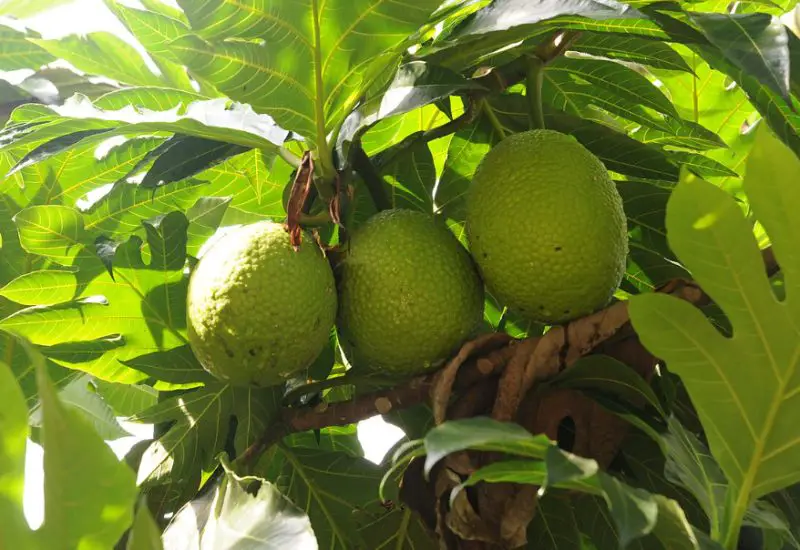
Hawaii’s main islands are home to a thriving population of breadfruit (Artocarpus altilis), a crucial source of carbohydrates in tropical climates. Monoecious trees, which yield both male and female flowers, are adorned with their broad, notched leaves. The fruit appears after pollination, growing to a length of 6 to 8 inches and having a thin, green skin. Extremely fruitful, some trees grow up to 2,130 feet in elevation and produce over 200 grapefruit-sized fruits a year.
Screwpine (Pandanus odoratissimus)
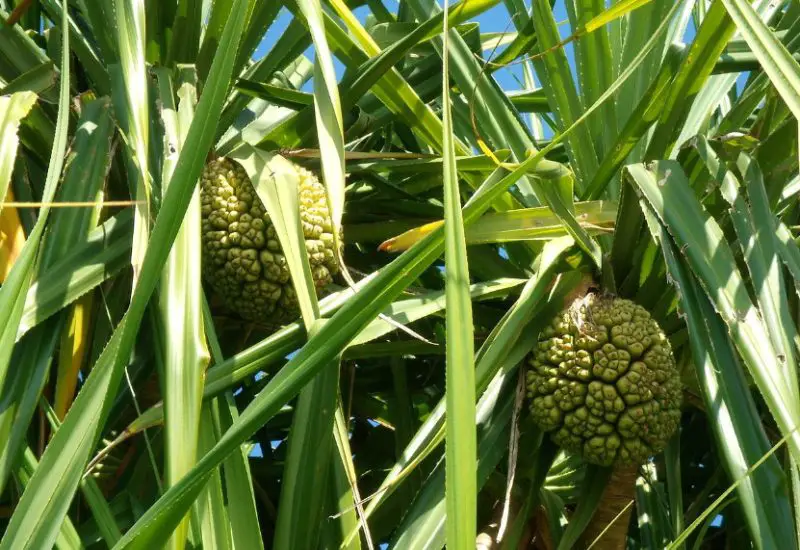
Hawaii’s coastal resident screwpine (Pandanus odoratissimus) is especially abundant on windward coasts. Native Hawaiians revere it for its adaptability; it grows freely throughout the Pacific, reaching elevations of up to 2000 feet. This dioecious tree, with its characteristic aerial roots and curved leaves, adds richness to the island’s landscape while bearing pineapple-shaped fruits among its fronds. It thrives in zones 10–11 and blooms from spring to summer. It is also known as the Hala or Hala Tree.
Royal Poinciana (Delonix Regia)
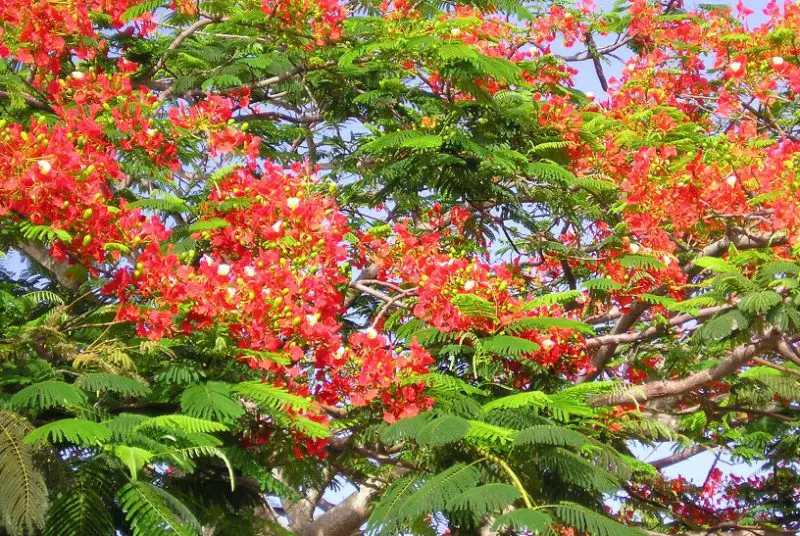
The vast canopy and fern-like leaves of the royal poinciana (Delonix regia), which blooms scarlet-orange in late spring to early summer, add beauty to landscapes. These little trees, sometimes called Flamboyant or Peacock Flower, have flat seed pods below clusters of 4″ flowers at the apex of their branches. Once established, they can withstand drought and grow quickly, adding vivid beauty to zones 10–12.
Red Mangrove Tree (Rhizophora mangle)
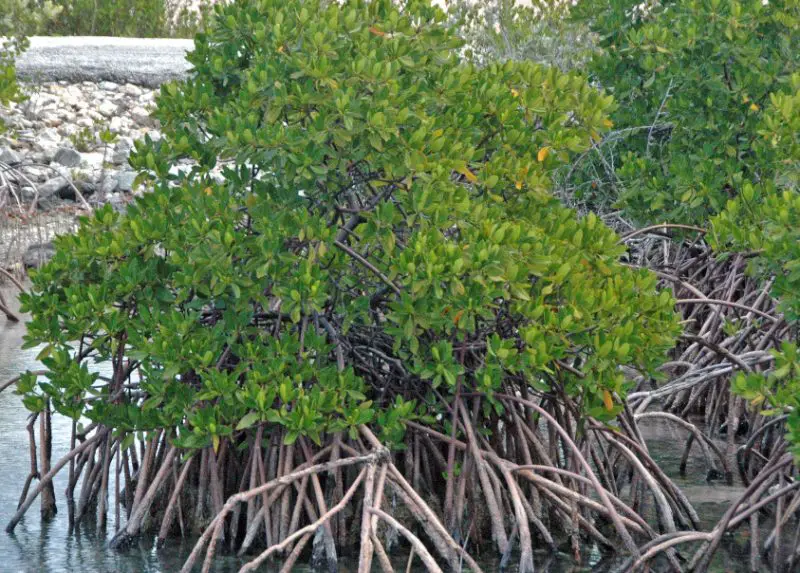
Rhizophora mangle, or red mangrove trees, are found in coastal regions where salt is abundant. They use pneumatophores to breathe above water and expel salt from their leaves. They anchor ecosystems that span land and water, which is essential for coastal protection and marine habitat. Their brown fruit, which is produced from star-shaped blooms, spreads by floating propagules that establish new roots and continue to play an essential role.
Noni (Morinda citrifolia)
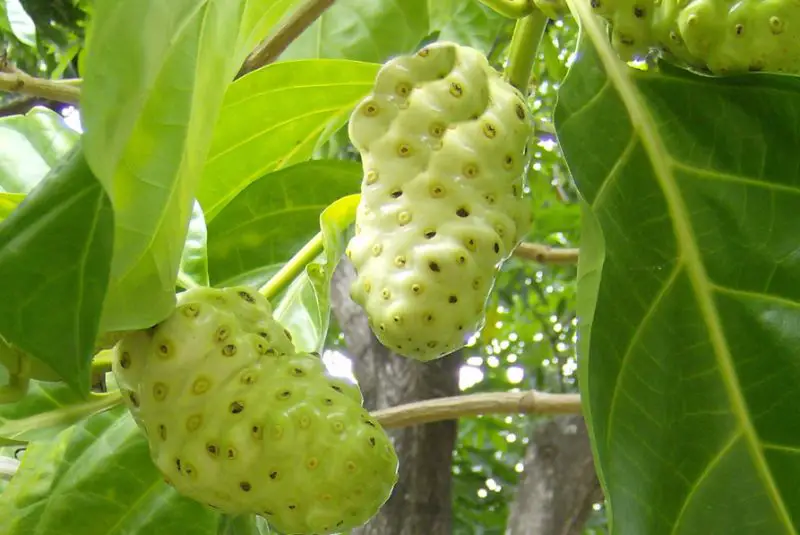
Loved for its healing qualities throughout the Pacific, noni (Morinda citrifolia) grows under a variety of conditions, including dry, moist, acidic, and alkaline. It grows on lowland mesic settings near shorelines and is resistant to fire, wind, salt, and flooding. Well-known for its nutritious fruits and leaves, noni is an essential component of traditional agroforestry techniques. Also called Indian Mulberry, it blooms all year long and grows best in zones 10–12.
Sausage Tree (Kigelia africana)
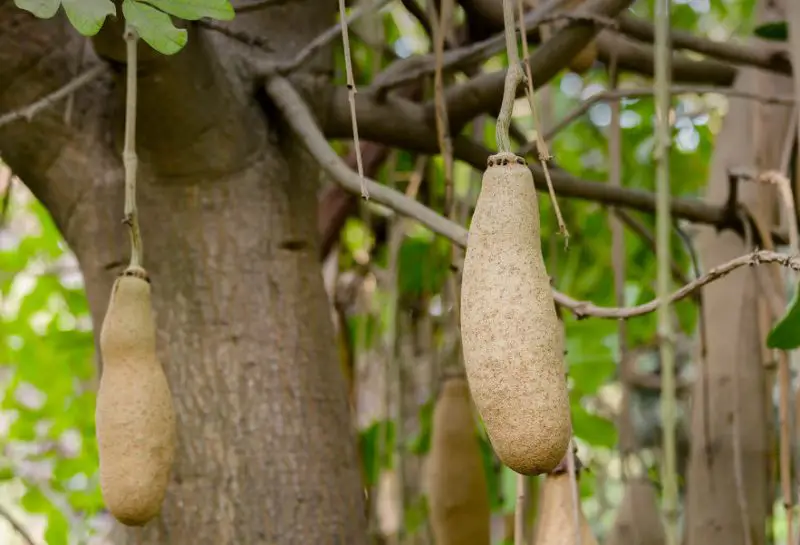
The unusual sausage-shaped fruits and expansive crown of the Sausage Tree (Kigelia africana) attract. Bark and fruit are collected from the wild, and it is widely grown in tropical and subtropical locations for therapeutic purposes. Its branches are adorned with heavy fruits that can weigh up to 22 pounds and bell-shaped flowers that, with their smell, draw birds and insects. Zoning 10–12, it blooms in the spring and summer and is also known as the African Sausage Tree or Cucumber Tree.

